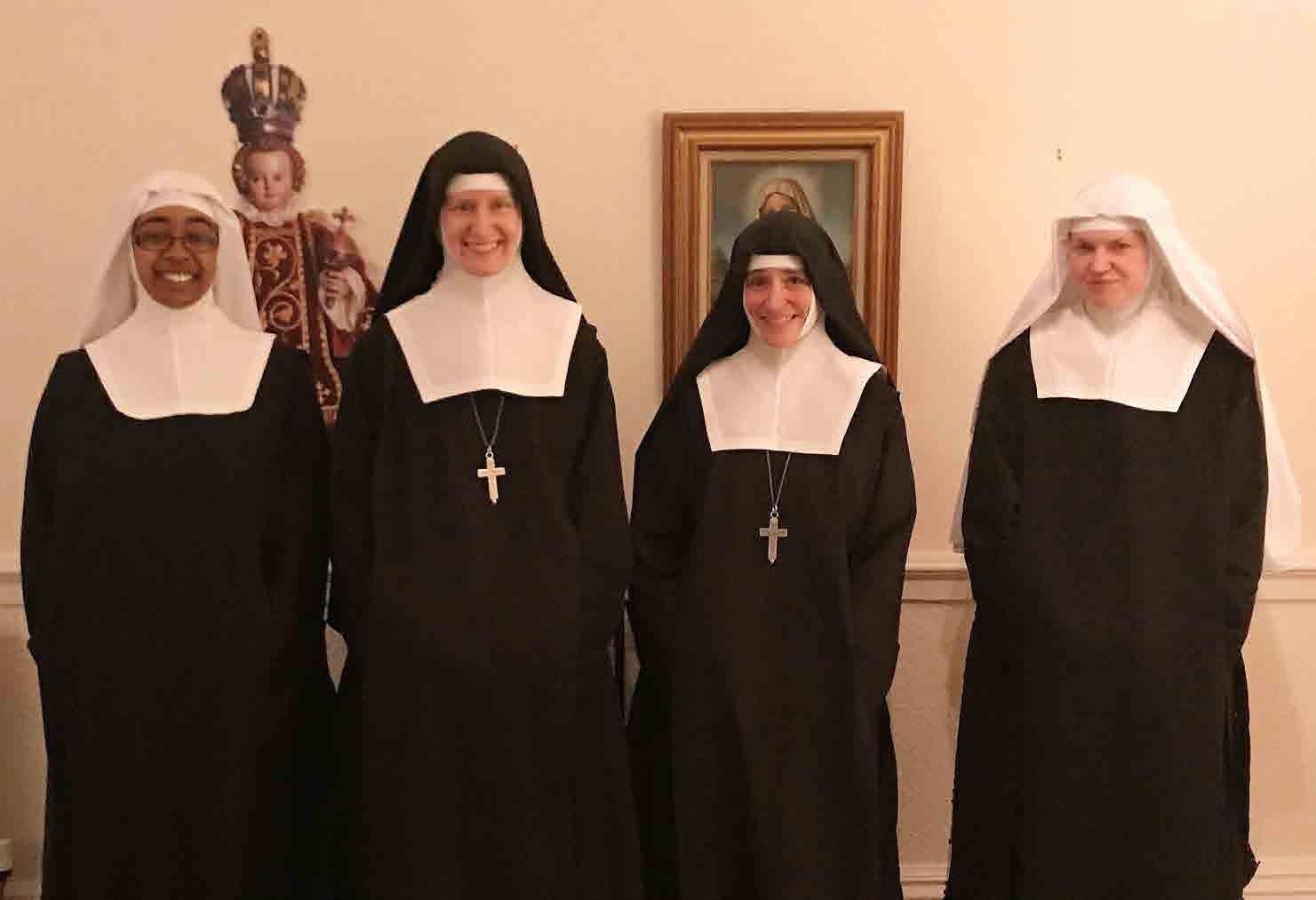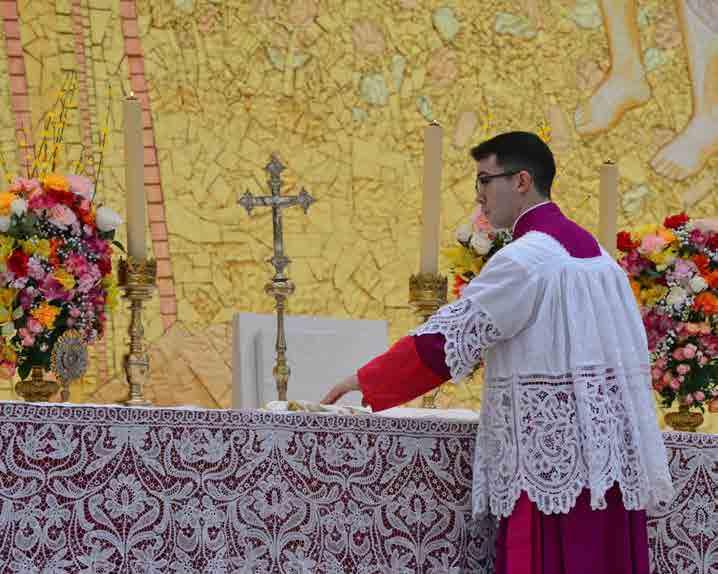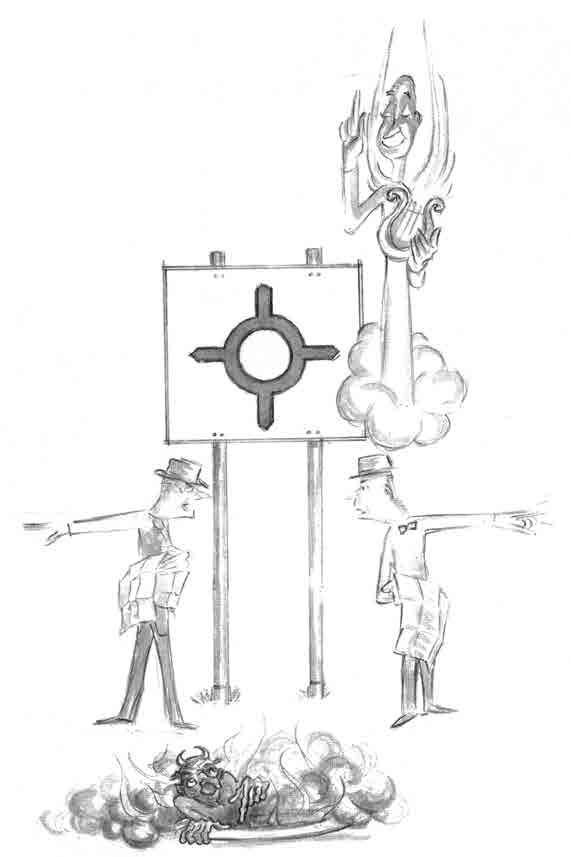ART AND DEVOTION
A Second Epiphany Caroline Shaw looks at The Presentation in the Temple by Philippe de Champaigne (1602-1674) 1648, Musées des Beaux-Arts, Brussels
T
his large and magnificent work, a somewhat under-rated masterpiece in the Musées des Beaux-Arts in Brussels, could perhaps be described as the definitive representation of the Presentation of Jesus in the Temple. The artist captures the central moment of the episode in which the aged Simeon, a ‘just and devout man’ who has spent his life in prayer and penance, takes the infant Jesus in his arms and thanks God for fulfilling the promise made to him by the Holy Ghost, that he would see the Messiah before he died. As onlookers, we gaze up at Simeon, who stands above us on one of the top steps of the classical portico in front of the Temple of Jerusalem. He raises his eyes to Heaven with a look of profound and sincere gratitude. He is moved beyond words. It is almost as though, at that moment, he can see the face of God the Father, to Whom he has devoted his whole life, while at the same moment he comprehends in the interior of his soul that the baby in his arms is God the Son. It is a momentous event in the life of this venerable old man, and indeed in the life of the Church. The artist has captured the brief instant before Simeon utters the great prayer of thanksgiving and resignation that we know as the Nunc Dimittis: “Now, Lord lettest thou Thy servant depart in peace, according to Thy word, for mine eyes have seen Thy salvation, which Thou hast prepared before the face of all people.” This is a moment of great weight, and indeed of great complexity, for if at first it appears as though Simeon is presenting the infant Jesus to His Father in Heaven, it becomes clear, when one looks closely at the solemn and magnificent face of Jesus, and then at the humble and accepting expression of Simeon, that it is Our Lord, in the form of an infant, who presents the holy old man to His Father. We are reminded of this in the words of the Alleluia of the Mass for this feast:
24
“The old man carried the child: but the child ruled the old man, Alleluia.” St Ephraem (d. AD 373), also expounded upon this in a homily on Our Lord: “Now Simeon the priest, when he took Him up in his arms to present Him before God, understood as he saw Him that he was not presenting Him, but was being himself presented.” This central moment reflects in a most beautiful way Simeon’s intimate communion with the three persons of the Trinity: he prays to God the Father in Heaven, he holds God the Son in his arms, and he has God the Holy Ghost, who led him to the Temple, as his guide. St Joseph stands to the extreme left of the painting, holding two turtledoves in a basket. He gazes in silent wonder at the old man. Our Lady, who stands next to Simeon, seems to direct her gaze towards the prophetess Anna, the holy and venerable lady of fourscore and four years who, as St Luke tells us, appeared at that instant, and “gave thanks likewise unto the Lord, and spoke of Him to all them that looked for redemption in Jerusalem.” Anna points towards Jesus, and explains to her companions that here, in the old man’s arms, is the long-awaited Messiah. Our Lady gestures towards herself in an expression of humility, but it is also a gesture that foreshadows what we know of Simeon’s final words to her: “a sword shall pierce through thy own soul also.” We remember as we look at her gesture, that this occasion is one of the Seven Sorrows of Our Lady. It is clear that she has a foretaste of the sword, as she looks with calm yet sombre attention at the two venerable characters, who seem to know so much about her new-born son. Our Lady’s gesture and expression, of humility mingled with a certain trepidation, might remind us with good reason of the Annunciation: the Angel Gabriel announced Our Lord’s Messianic royalty, whereas this time it is Our Lord’s work of redemption which is being announced. The ‘sign of contradiction’ that Simeon speaks of, has long been interpreted
as a reference to the Cross, Our Lord’s Passion and the suffering of His mother. This moment is also a second Epiphany, in which the divinity of the infant Jesus is recognised and acknowledged in the wider world. We are reminded of this by the trio of young men standing next to Anna, who take on the role of the three wise men as onlookers and adorers. They are a masterpiece of quiet drama, beautifully painted, with their wonderfully individual and expressive faces. As they contemplate the Christchild, each undergoes his own interior moment of epiphany, of revelation and conversion. The artist Philippe de Champaigne was a man of deep faith and sincere convictions. Born into poverty in Brussels, he moved to Paris and quickly became one of the most successful and soughtafter artists at the royal court of the Queen Mother, Mary de’ Medici. He was a great favourite of Cardinal Richelieu, and later of King Louis XIV. He painted portraits of the entire French court, the French high nobility, important members of the Church and State, parliamentarians, architects and other men and women of note. At the height of his popularity and success, he became increasingly drawn to the devout life, and by the time this work was painted, he had become closely involved with Port Royal, the convent in Paris that was at the time the centre of the Jansenist movement in France. Both his daughters became nuns at this convent, and indeed one, Soeur Cathérine, was said to have been miraculously cured from paralysis by her Abbess. De Champaigne’s strong inclination towards austerity and spirituality, and his yearning in his later years for the contemplative life, is perfectly encapsulated in the face of Simeon, the old man who dedicated his life to fasting and prayer, and who was rewarded for his devotion and fidelity by a direct encounter with God Himself.
SPRING 2018

















